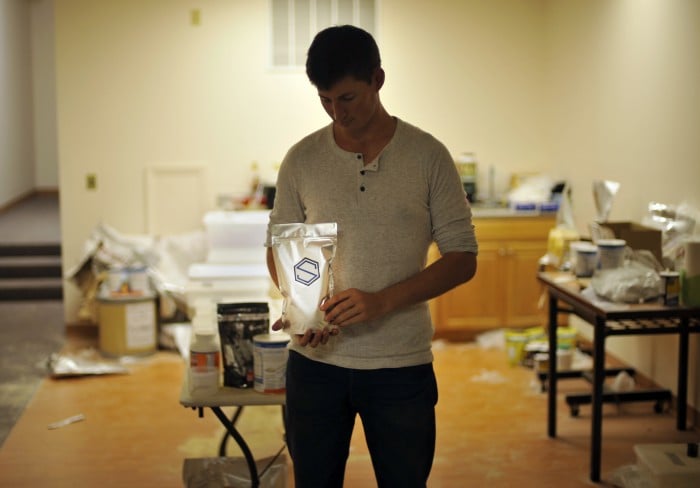Soylent Keeps Making People Sick
Soylent, the startup that launched a meal replacement drink for people who feel they have too little time to eat actual food, has been upsetting some stomachs lately. And not just those of its investors, who have fronted $20 million in seed funding to a company that makes a product that’s been described as tasting like “wet cardboard.”
Soylent recently recalled its food bar (and we use the term “food” loosely here) after dozens of complaints emerged that the product was causing nausea, diarrhea, vomiting, and other symptoms. Its drink powder, which is the company’s flagship product and is meant to provide a balance of all the nutrients a human body needs, is now causing similar problems.

The company that manufactures the bars for Soylent insists that food-borne illness is not to blame, and that people may just be “intolerant” of one or another of the many processed ingredients in the bars. That may be, but as a recent piece in the New Yorker points out, Soylent’s unappealing taste and a few cases of gastrointestinal distress can’t compare to the wrongheadedness of the new food tech movement in general:
The problem with all this food-2.0 stuff isn’t that it sometimes tastes horrible but that it misses the mark on how our eating is evolving. The tech world approaches food from the perspective of engineering: a defined problem to be solved, with the right equations, formulas, compounds, and brainpower. Soylent was developed by its creator, Rob Rhinehart, to compress all the nutrition the human body needs to live into one single, easily digestible formula, like the twenty-first-century version of manna. But that is fundamentally the opposite of the way we increasingly want to eat in America and in much of the developed world.
When you look at the recent arc of food culture, the most significant food movement is the purposeful pushback against the postwar industrial food system, a system that was the food futurism of its day.
Several years ago, food author and slow-food advocate Michael Pollan advised us to “eat food.” That simple premise was meant to help us fish a healthy, nutritious diet from the sea of “food-like substances” that populate modern grocery stores shelves. It wasn’t a rebuke of the new flavor of Silicon Valley-funded food tech. But it may as well have been—nothing could be further from what someone is doing by ingesting a Soylent product (whose adherents have been known to describe themselves as “post-lunch”).
As it turns out, it might also be good advice if you’re looking to avoid a stomach ache.
(Read more: Los Angeles Times, Ars Technica, the New Yorker, “Technology Is Eating Up Restaurants”)
Keep Reading
Most Popular
Large language models can do jaw-dropping things. But nobody knows exactly why.
And that's a problem. Figuring it out is one of the biggest scientific puzzles of our time and a crucial step towards controlling more powerful future models.
The problem with plug-in hybrids? Their drivers.
Plug-in hybrids are often sold as a transition to EVs, but new data from Europe shows we’re still underestimating the emissions they produce.
Google DeepMind’s new generative model makes Super Mario–like games from scratch
Genie learns how to control games by watching hours and hours of video. It could help train next-gen robots too.
How scientists traced a mysterious covid case back to six toilets
When wastewater surveillance turns into a hunt for a single infected individual, the ethics get tricky.
Stay connected
Get the latest updates from
MIT Technology Review
Discover special offers, top stories, upcoming events, and more.